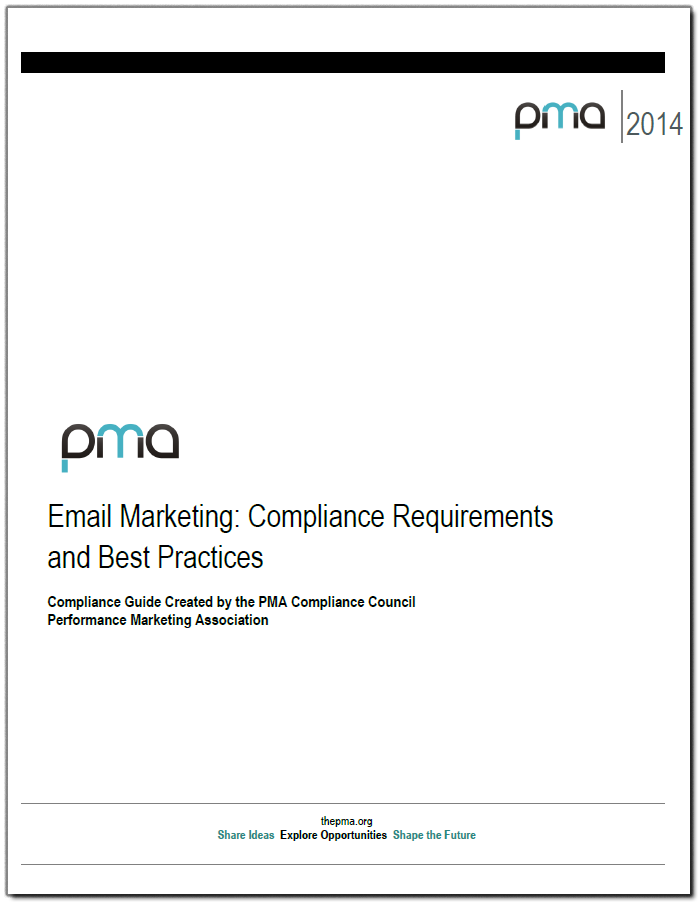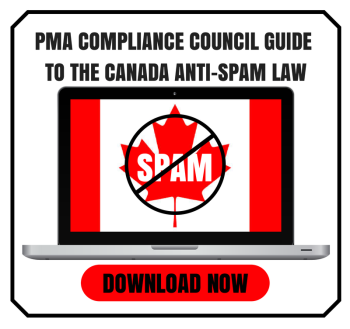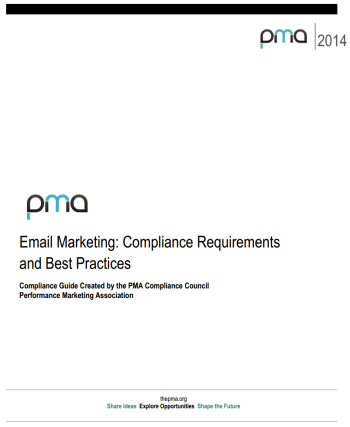The Performance Marketing Association (“PMA”) Compliance Council is excited to release a new white paper outlining key recommendations for advertisers, agencies, networks, publishers and solution providers with regard to email marketing compliance and best practices.
Background and Purpose
 The CAN-SPAM Act doesn’t apply solely to bulk email; it covers all commercial messages, which the law defines as “any electronic mail message the primary purpose of which is the commercial advertisement or promotion of a commercial product or service,” including email that promotes content on commercial websites.
The CAN-SPAM Act doesn’t apply solely to bulk email; it covers all commercial messages, which the law defines as “any electronic mail message the primary purpose of which is the commercial advertisement or promotion of a commercial product or service,” including email that promotes content on commercial websites.
The law makes no exception for business-to-business email. All email, including, for example, a message to former customers announcing a new product line, must comply with the law. Each separate email in violation of the CAN-SPAM Act is subject to penalties of up to $16,000.
Best practices are an additional layer of standards that are consistent with the consumer protection goals and desire to enhance relationships, and often flow from court decisions or regulatory action where the statements or decisions don’t clearly meet the definition of legal requirement. Examples of best practices include not using an image-based opt-out and using a publicly registered from domain.
The purpose of “PMA Compliance Council Guide to Email Marketing: Compliance Requirements and Best Practices” is to inform performance marketers of key compliance requirements and best practices with regard to email marketing. By advocating for best practices, we seek to elevate industry practices, the consumer experience, and advertiser investment in the email channel. We believe that, within the channel, best practices help not only to enhance relationships and mitigate risk, but also help to improve delivery and return on investment.
Buy Email Marketing: Compliance Requirements and Best Practices







